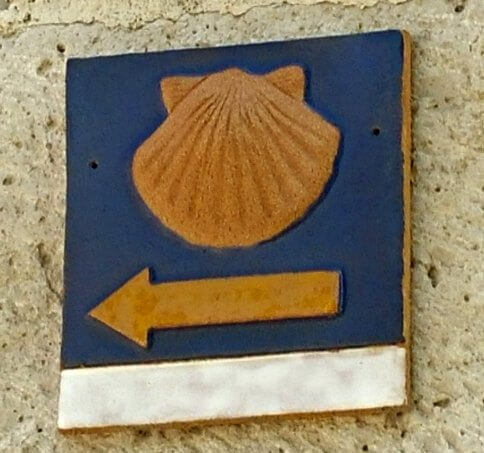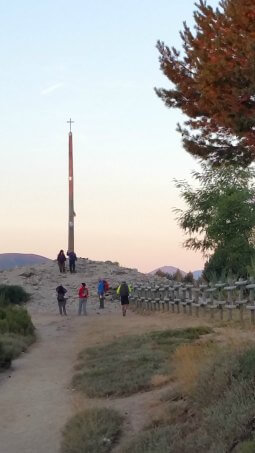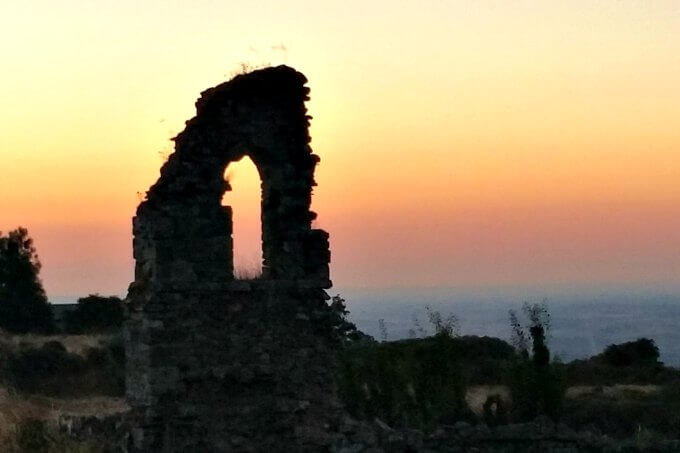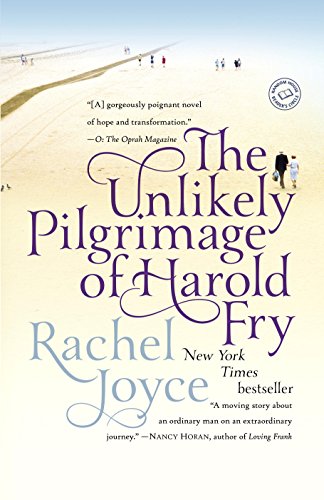The End of Camino 2017
Last Updated on September 6, 2017 by lydiaf1963
As it turns out, the first night was the only one where I had a strong enough signal to connect to the internet long enough to upload a blog post. Spotty service is a good word. It allowed for messaging via WhatsApp and Facebook so at least I was able to assure my family I was ok.
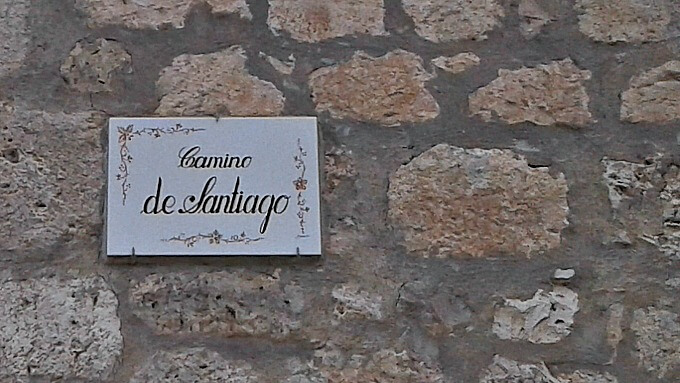
I walked the portion of the Camino Frances between Burgos and Frómista, taking four days. Why those two cities? Well, last year I had started in Frómista and for this year’s trip I’d originally planned to start walking in France and complete the trek. But after one thing and another, I ended up starting in Burgos. It is convenient to travel to and from those towns by train.
Rick came with me to Burgos and we visited the Museum of Human Evolution before spending the night in the city.
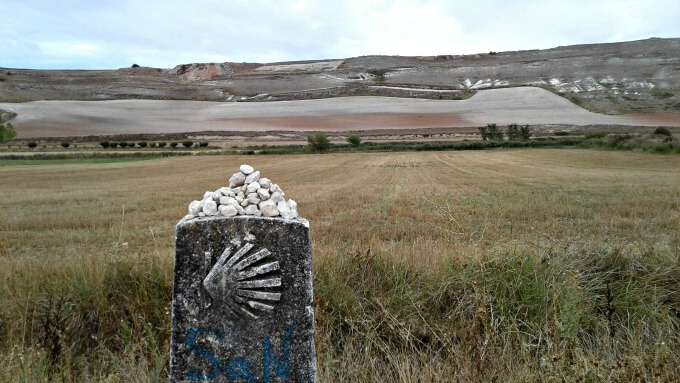
Day One: Burgos to Tardajos 13 km/8 miles
I wrote about the first day in this post. I walked alone for the most part. At the albergue I met a pair of sisters from Nevada. They were in their 70s and had close to 30 grandchildren between the two of them. The younger one was walking the Camino and the older one drove ahead and made sleeping arrangements.
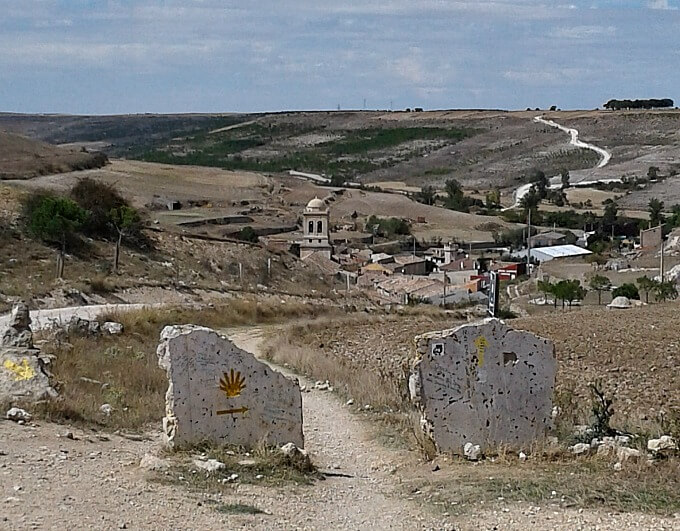
Day Two: Tardajos to Hotanas 23 km/14 miles
The second day was uneventful with the exception of meeting a lovely Brazilian woman named Cristiana. She was in the middle of a three year sabbatical and was spending her time travelling. We walked together and chatted for about an hour through seemingly endless fields of cut wheat before arriving without warning to the valley containing the town of Hotanas. She continued her journey while I chose to stay.
I ended up sharing a room with three men. Two were longtime friends from France who were walking the camino together for the second time. The third was a man named Sean from Ireland. Sean had injured himself earlier in his trip and he was trying to make up for lost time.
After checking into the albergue and washing my clothes I had lunch with a man from Chile who currently lives in the Canary Islands named Emilio. He carried several days of food with him. I offered him some olives and tuna and he shared his pasta with me. I’ll admit I was hungry, but it was a decent bowl of food.
Hotanas has an ancient 14th century church where we celebrated the Pilgrim’s Mass. Someone had gone to the trouble of printing translations in the most common languages. After there was time for a beer before heading back to the albergue for a community dinner of paella.
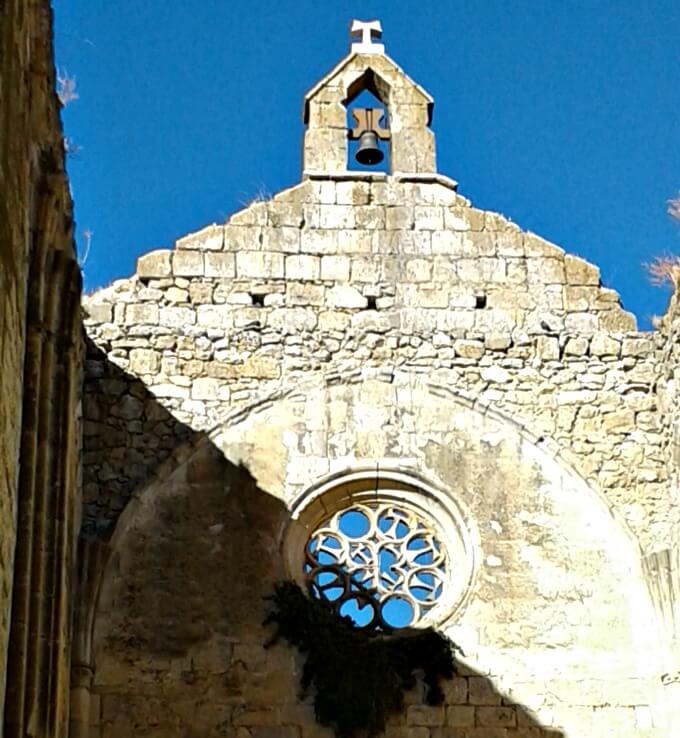
Day Three: Hotanas to Itero de la Vega 24 km/15 miles
This was the most interesting day by far. The morning air was cool, but I was comfortable enough. The walk was on a nice sandy path and there was plenty of wildlife to watch. I ended up listening to the bird song instead of my usual music.
The Camino literally goes through the ruins of the monastery of San Anton. Although there’s no electrical service, there’s an albergue inside. I stopped in to see if I could use their facilities. Turns out, they didn’t have any water, either! The hospitalero was from Boston, via England and we had a nice chat about the challenges of running an albergue without electricity, toilets or running water…gee, I don’t understand why no one wants to stay there. He said they had to walk into the next town to take a shower.
Interestingly enough, he mentioned chatting with a Brazilian lady and it turns out it was Cristiana.
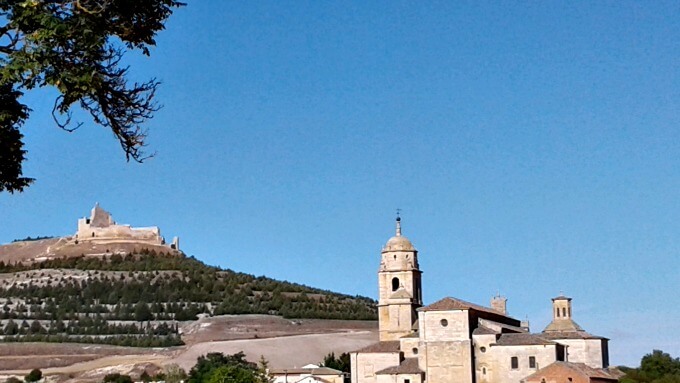
Back out on the road I watched the town of Castrojeriz grow larger as I closed the distance. The town is a beautifully preserved medieval city which wraps around a hill and is overlooked by the ruins of a castle dating back to the Romans.
My guidebook advised conserving energy for the next section of the Camino so I refueled with a sandwich. I’m glad I did because the hill that followed Castrojeriz was quite a challenge! It’s just over a kilometer of 12% grade going up and just shy of a half kilometer of 18% grade going down. The downhill portion is covered with cement and looked like a twisted knee just waiting to happen. I took it slow both ways.
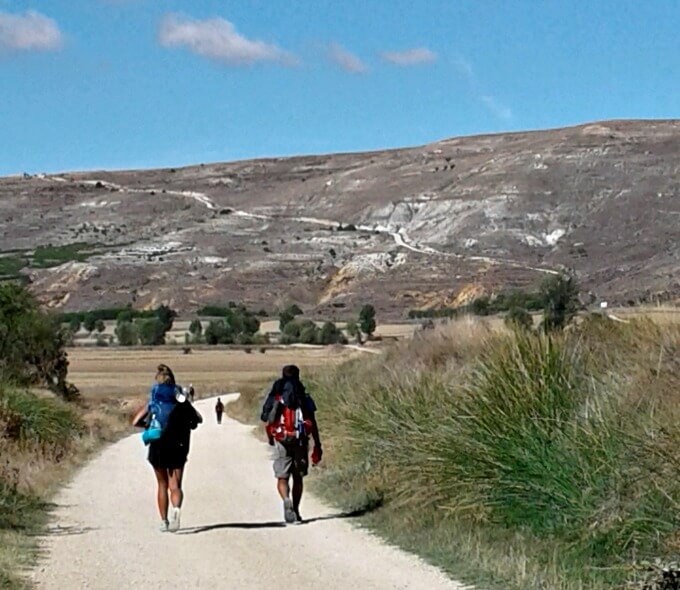
Going up I took fifty or so steps, then stopped to catch my breath. Another 50, another short rest. The views were amazing so even though it took me a while to climb to the top it wasn’t a terrible hardship. I did notice a spot on the top of my foot was giving me a little grief but I foolishly ignored it. I paid for that later.
Going down I lengthened my poles to help check my forward momentum and just stepped carefully. My knees were singing about halfway down. I watched jealously as a couple young girls skipped past like deer without a problem.
By the time I reached the town of Itero de la Vega I was whipped. But I ran into Cristiana, the sisters from Nevada and another couple from California I’d met the day before. We all commiserated about the hill and enjoyed an impromptu meal of dates, pistachios, goat cheese and wine.
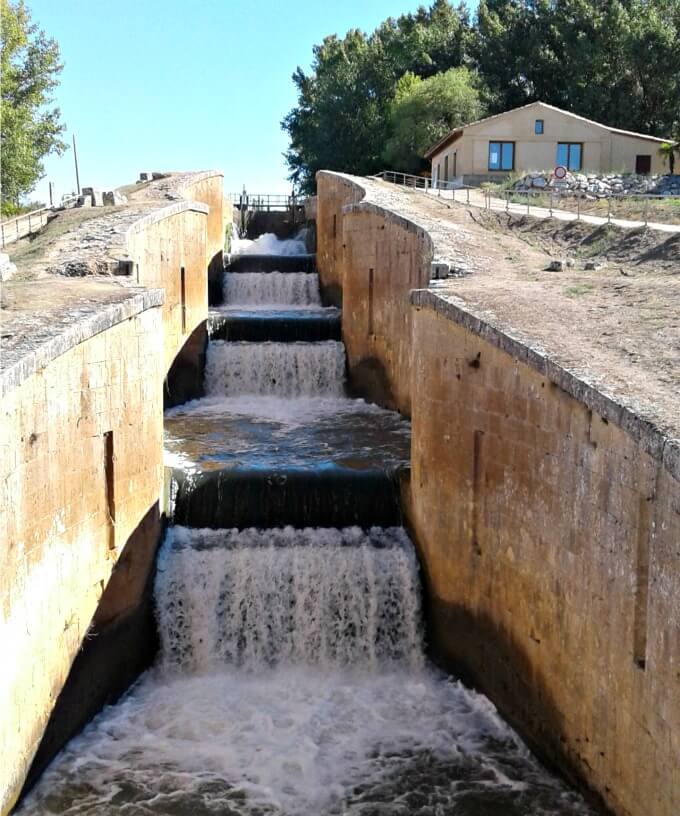
Day Four: Itero de la Vega to Frómista 16 km/10 miles
I didn’t sleep well the night before. For whatever reason, I couldn’t get comfortable and I kept waking up. As soon as there was enough light to see, I was on the road. I had worn a blister into the top of my foot the day before and even though I’d bandaged it, I could feel it. I wasn’t until I reached the Canal de Castilla that would lead me to Frómista’s iconic quadruple locks that my mood lightened. I noticed the golden light and the Autumn warmth and let myself revel in the freshening breeze.
As soon as I got into town I headed to the train station to buy my ticket home. I lucked out in that I only had to wait a half hour or so for the next one. At the station I met another American, Tony from Oregon. His mother was from Madrid and he still had family in Spain. He hoped to come back to finish the Camino but worried about being able to take off for the three weeks it would take to finish.
I gave him my Ultreia backpack bling to remind him to keep going and figure out a way to finish and said goodbye at the train station in Valladolid.
Camino 2017 was a very different experience from last year. Last year the entire thing felt very personal and it’s been a challenge to put it all “on paper.” This year I was more open to interacting with the other pilgrims. I heard much about the bleak landscape but personally I find the Meseta to be very beautiful and appreciated both the opportunity to be alone with my thoughts and to meet new people and share with them the wonder of this ancient pilgrimage route.

